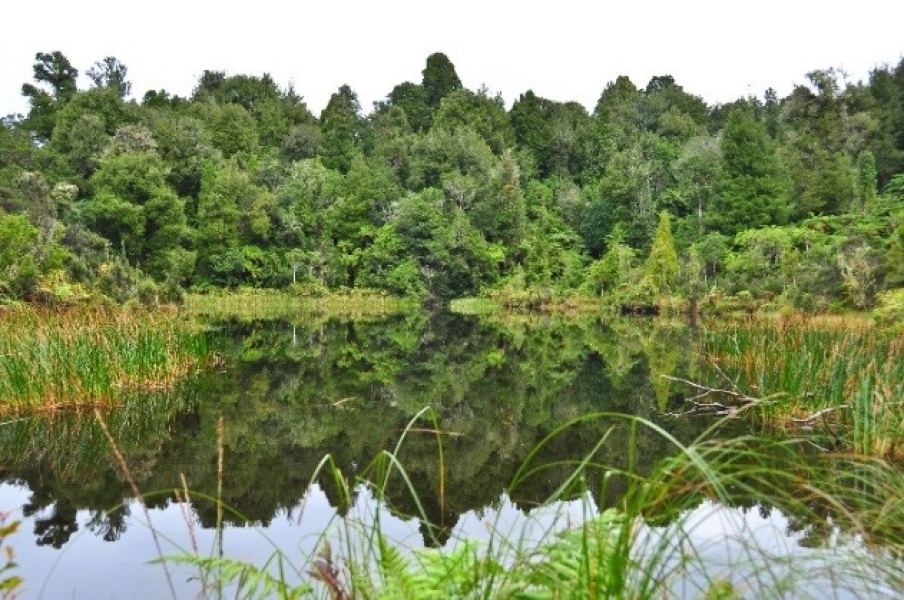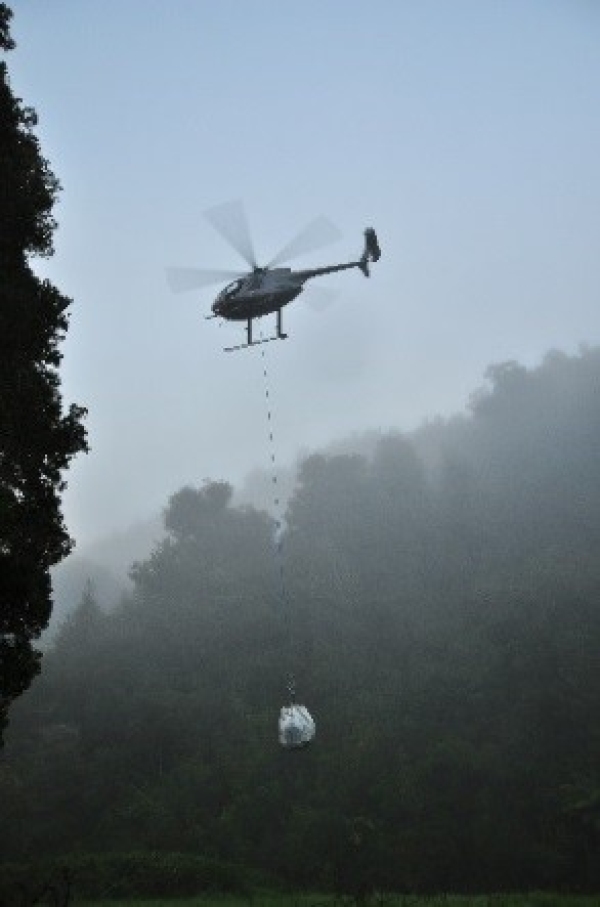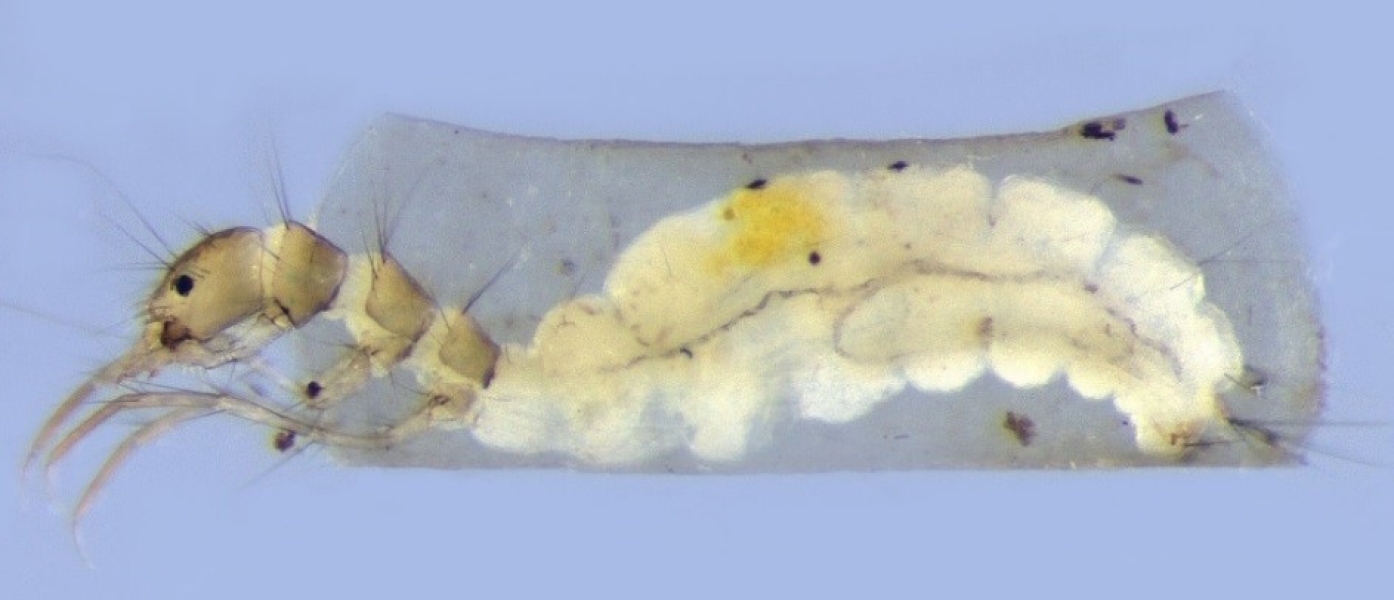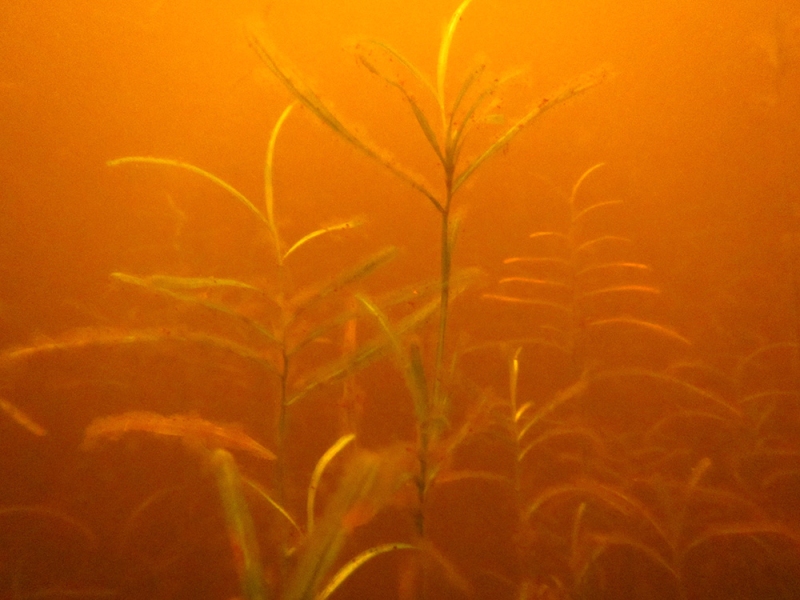With a LakeSPI (Lake Submerged Plant Indicators) Index of 97% Lake Koraha is categorised as being in ‘excellent’ ecological condition. As such, Lake Koraha is currently the highest scoring water body in the Waikato Region and the second highest ranked lake nationally.
Recent investigations in the lake also uncovered a new to science caddisfly species.
Lake Koraha is a rare example of an intact, lowland karst lake system with surrounding native forest cover located near Hauturu, in the Waikato region. It is a small lake (0.784 ha) which is completely land locked and drains via a small cave system.
Lake Koraha has been visited several times in the last few decades by DOC botanists and Council staff with an interest in lakes, who have made valuable observations of the lake, but were not able to undertake thorough investigations due to the inaccessibility of the lake, and physical limitations on the amount of gear that could be transported on foot.
Department of Conservation's involvement
Lake Koraha was first identified as a priority ecosystem site for the Department of Conservation (DOC) using its natural heritage prioritising processes in September 2013. In 2009 Waikato Regional Council undertook a project to assess the relative biodiversity values of the Region’s lakes.
In this process, Lake Koraha was identified as being data deficient, but of particular interest because of its location within a predominantly native catchment. To fill information gaps noted during these processes, DOC and Waikato Regional Council (WRC) together contracted NIWA to investigate the submerged aquatic plants and invertebrate communities in Lake Koraha in March 2015. This work was timed to capitalise on other helicopter work being undertaken in the area by DOC.
Due to the lake’s remote location and limited access, SCUBA diving gear required to complete the survey was transported up to the lake edge by helicopter. NIWA divers, guided by Abi Quinnell (DOC ranger, Te Kuiti) then hiked for more than two hours through native forest to the lake. “Nationally Lake Koraha is very unique and it is vitally important for us to be able to document what’s in it and monitor what condition it is in. In this case the lakes isolation and difficult access are clearly beneficial in helping to protect its unique attributes” says Thomas Emmitt (DOC ranger, Te Kuiti).
Aquatic plants survey
Aquatic plants were surveyed from within the lake using LakeSPI, a bio-assessment method widely used for monitoring and reporting on the ecological condition of New Zealand lakes. LakeSPI is recommended by Ministry for the Environment (now Ministry for Primary Industries) as one of two indicators of water quality (MFE, 2014) and it is being used by regional councils for State of the Environment reporting.
Read more about the LakeSPI bio-assessment method
The WRC has used LakeSPI to assess sixty-two lakes from within the region covering a wide range of conditions from those lakes with no submerged vegetation (LakeSPI = 0%) to a maximum LakeSPI Index of 97%. This high score for Lake Koraha, close to its maximum scoring potential of 100%, reflects a lake that while shallow (max depth 3.1 m) has retained a well-developed native plant community in the absence of any problematic invasive species.
Divers recorded a complete cover of charophyte species (Nitella cristata) and bryophytes (Drepandocladus aduncus) forming in a narrow band around the lake down to an average depth of 2.6 m then a continuous cover of native pondweeds (Potamogeton ochreatus) growing across the lake bottom (Photo3). Native milfoils (Myriophyllum propinquum) and a callitriche species were also common.
Invertebrates discovery
An investigation of invertebrates from within Lake Koraha found 13 macroinvertebrate taxa with the highlight being the discovery of a potentially new caddisfly (Trichoptera) species. An examination of several larvae and a male pupa collected from the composite sample suggests there are sufficient morphological differences from the fifteen already described species of Paroxyethira to warrant a new species (Photo 3). This group of minute caddisflies are poorly understood and it is hoped that on further investigation more endemic species may be discovered.
Further investigations and preservation
While on the lake, divers also took measurements of dissolved oxygen, water temperature and water clarity. Observed natural tannin staining of the water resulted in a low water clarity (Secchi disk measurement 1.8 m) and high amounts of flocculate organic matter was also noticed covering the plants.
While these recent investigations and findings from Lake Koraha are exciting, the shallow nature of this lowland kaarst lake means that it is especially vulnerable to change. Seemingly small impacts can have potentially large ecological consequences over a short time period. Lake Koraha’s isolation and difficult access are worth retaining when it comes to preserving the unique features found in this exceptional lake.





